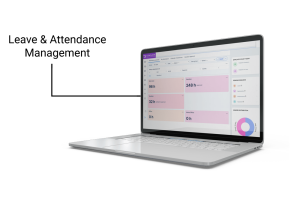In the dynamic world of small and medium-sized businesses, keeping track of employee attendance is difficult. Managing absences and leave can be quite a challenge. Business owners, especially those in the startup and small enterprise sector, often grapple with manual and error-prone absence management systems.
This is where Human Resource Management Systems (HRMS) step in as saviours. It offers simple yet powerful solutions to streamline attendance management with leave and keep your business compliant.
The Absence Management
For many small business owners, attendance management often feels like juggling too many balls in the air. Keeping records of who is present, who is on leave, and why they are on leave can quickly become a Herculean task. Traditional pen-and-paper methods or using generic spreadsheets can lead to errors, compliance issues, and significant time wastage.
Absence management includes handling various leave types, such as sick leave, vacation leave, maternity leave, and more. In addition, it involves ensuring compliance with labour laws. Also includes accurately calculating leave balances, managing leave requests, and recording absences efficiently.
These complexities can be overwhelming, but the right HRMS solution can make tasks feel like a breeze.
Your Simple Solution With HRMS
- Automated Leave Requests: Traditional leave request systems often involve paperwork and multiple approval steps. HRMS simplifies this by allowing employees to submit leave requests electronically. Later, this can be reviewed and approved with a few clicks. No more lost paper requests or lengthy email chains.
- Accurate Leave Balances: HRMS systems keep track of leave balances automatically. You and your employees can easily check how much leave is available, reducing confusion and errors.
- Leave Types Customization: Every business has its unique leave policies. HRMS systems can be configured to handle different leave types and policies specific to your business.
- Compliance Management: Keeping up with labour laws and regulations can be a daunting task. HRMS solutions often come with compliance management features. It ensures that your business is always in line with the latest labour laws.
- Absence Reporting: HRMS provides comprehensive reports and analytics regarding employee absences. This data can be incredibly useful for monitoring trends, understanding patterns, and making informed decisions about absence management.
- Mobile Accessibility: HRMS solutions usually offer mobile apps or web portals for employees to access their leave balances, submit requests, and receive updates anytime, anywhere. It’s a convenient and accessible way for employees to manage their leave.
- Self-Service Capabilities: For small businesses, time and resources are precious. HRMS allows employees to manage many absence-related tasks themselves, reducing the burden on HR personnel.
The Way Forward
In conclusion, for small and medium enterprises, an HRMS System offers a cost-effective, user-friendly, and compliant solution for absence management. By implementing an HRMS tailored to your business, you can say goodbye to the complexities of manual management of HR tasks. Your employees are paid accurately and on time, even when they’re away.
So, if you’re an entrepreneur or business owner juggling attendance and leave management, it might be time to consider the power of HRMS for your business.
Investing in an HRMS is more than just a technological upgrade. It’s a strategic move that can lead to efficient, accurate, and compliant HR management.
Make a smart choice and let your HRMS do the heavy lifting for you.




